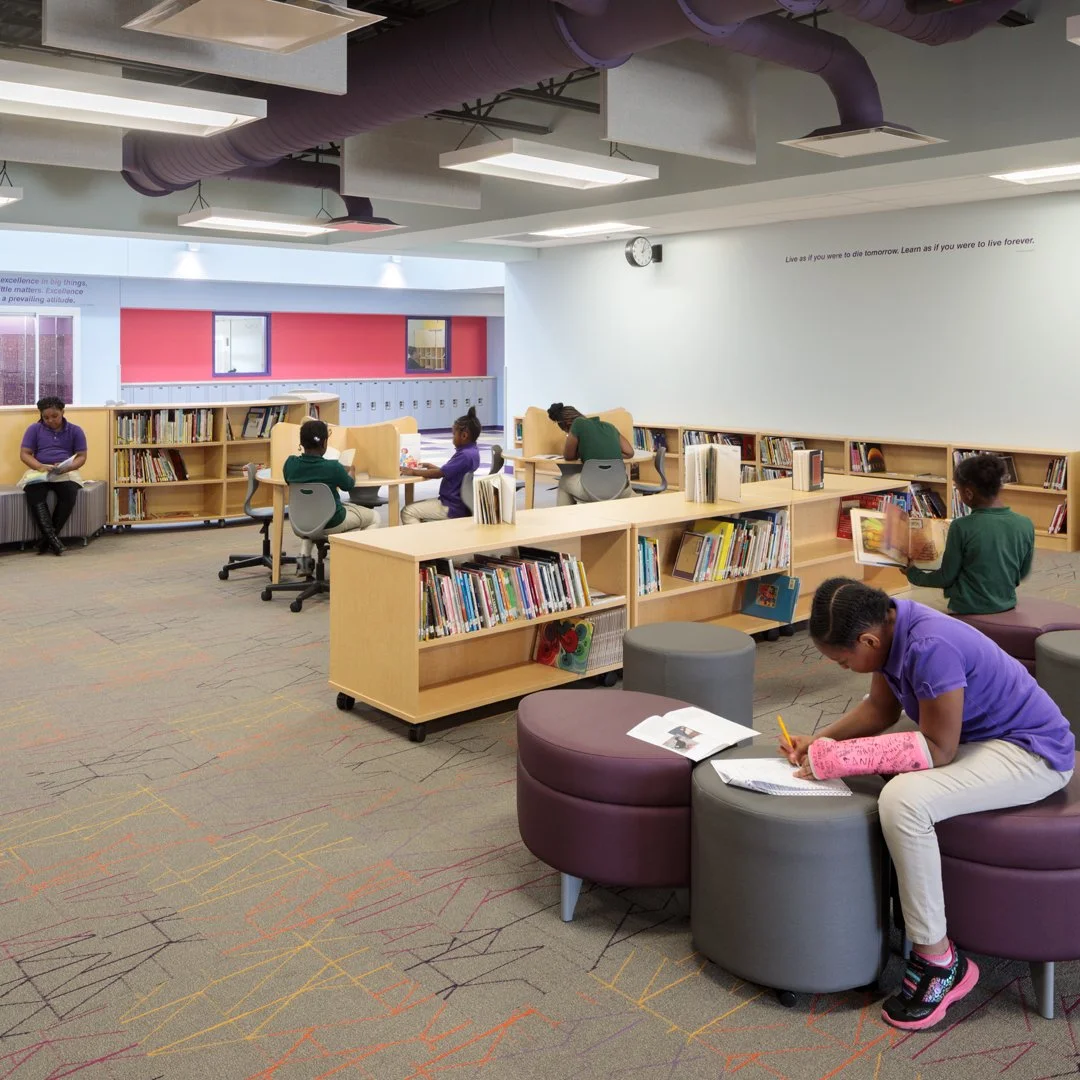COLUMBUS AFRICENTRIC EARLY COLLEGE
Architecture as cultural affirmation. Columbus Africentric Early College needed a building that would celebrate African American heritage through design while providing modern learning environments supporting community-centered education.
-
The design team developed architectural language meaningfully incorporating elements of diverse African cultural traditions throughout the 163,000-square-foot K-12 facility. Distinctive features including masonry patterns inspired by kente cloth textiles and Egyptian-influenced columns transform cultural references into integral architectural elements rather than superficial treatments.
Spatial organization embodies Africentric educational principles by creating series of community-centered environments. Grade-level areas structure around shared central spaces fostering intergenerational learning while specialty facilities including theater and field house support holistic development. These programmatic elements arrange to create natural gathering points encouraging spontaneous interaction.
Sustainability was approached as both environmental responsibility and educational opportunity. The LEED Gold registered facility incorporates visible green building strategies, becoming teaching tools about environmental stewardship.
Opened in January 2017, the new Columbus Africentric Early College transformed educational experience by providing physical environment authentically reflecting the school's unique educational philosophy. The building itself became active participant in learning, its spaces providing daily affirmation of African American cultural heritage while strengthening the institution's role as community anchor.
-
Columbus, OH
-
2017
-
Learn






